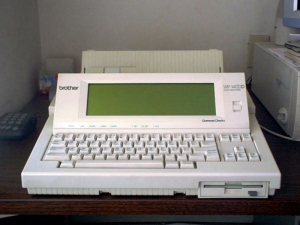
The Smithsonian Institution once had a very large snail mail operation (previously referred to simply as "mail"). All mail that was not specifically addressed to a specific individual was delivered to the Public Inquiry Mail Service (PIMS), a division of the Visitor Information and Associates' Reception Center. In approximately 1982, PIMS produced a brochure for staff advertising the services they provided. It notes that they received over 28,000 pieces of mail during the previous year. That's over 75 letters a day (not taking into account Sundays or holidays) that either needed to be rerouted or contained routine questions that needed to be answered.
 As a fun side note, one of the services advertised in this brochure was the writing and editing of preprinted materials using a word processor, "a marvelous tool for keeping information up to date." Staff from across the Smithsonian could send draft texts for bibliographies, fact sheets, and other preprinted reference materials to PIMS. The PIMS staff would "put the text into the machine's memory," edit it according The Chicago Manual of Style, and return it for final approval. If there were additions or corrections to be made, "the changes can be printed out within moments."
As a fun side note, one of the services advertised in this brochure was the writing and editing of preprinted materials using a word processor, "a marvelous tool for keeping information up to date." Staff from across the Smithsonian could send draft texts for bibliographies, fact sheets, and other preprinted reference materials to PIMS. The PIMS staff would "put the text into the machine's memory," edit it according The Chicago Manual of Style, and return it for final approval. If there were additions or corrections to be made, "the changes can be printed out within moments."
Almost two decades later, email had become a common form of communication. An article in the Winter 1999 issue of "The Info Special: A Newsletter of the Smithsonian Visitor Information and Associates' Reception Center," an article noted that email traffic from the public had increased 89% from the previous year. In August 1999 alone, PIMS received 1,375 inbound emails.
Today, the Smithsonian continues to receive emails and even letters from the public, but also conveys information to the public via its websites and social media accounts.
Related Resources
- Contact Us, Smithsonian Institution
- Where is the Smithsonian?, The Bigger Picture, Smithsonian Institution Archives
Related Collections
- Accession 14-034 - Smithsonian Institution, Office of Visitor Services, Publications, 1959, 1973-2013, Smithsonian Institution Archives
- Typewriters at the Smithsonian
Produced by the Smithsonian Institution Archives. For copyright questions, please see the Terms of Use.

Leave a Comment